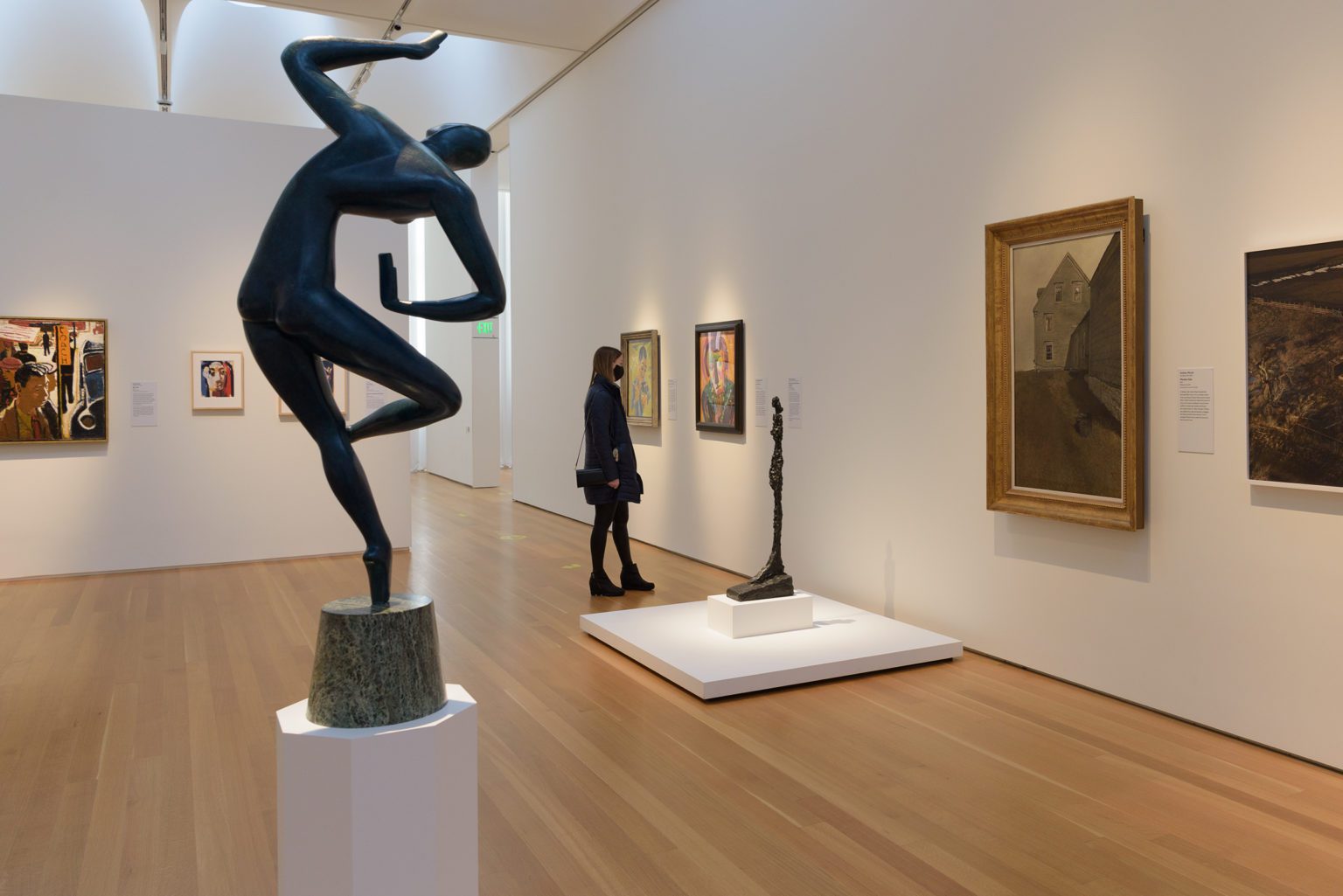
What is Slow Art?
The average person spends less than 30 seconds viewing a work of art. Slow art or slow looking is an observation style gaining traction around the world that aims to change this through intentionally observing art. Rooted in a meditative approach, this practice encourages not only taking more time to appreciate a work of art but also cultivating a slower state of mind in order to do so. Slow art encourages observers to share and reflect on their experience with others; this social aspect enriches insights and can expand perspectives.
At the NCMA our approach is multisensory and embodied—activating all the senses to become fully present in order to take in an artwork and create the opportunity for a personal connection. We have found that this form of mindfulness is an accessible and effective way to engage with yourself, others, and art in a deeper way.
Learn more in this article on slow art and on the international Slow Art Day website.
How to Practice Slow Art
Self-guided resources
Try it out yourself! Visit the NCMA or anywhere you can find art.
- Choose a piece that you are drawn to, curious about, or want to connect with more. It can even be an artwork that you might not like at first; this is a great way to challenge yourself to expand your perspective.
- Take some deep breathes or relax and come into the present moment however feels best to you.
- Set a timer for at least two minutes and start by quietly observing the piece. Try to do this in a focused way, with all your attention on the art. Don’t overthink what you notice. View the artwork from multiple angles, closeup and faraway. Take it all in.
- As your time of slow looking concludes, reflect on your experience. You can do this with friends or by yourself. You might discuss observations or journal about it. If there are still burning questions in your mind, you might go home and research the work of art to see if learning about it changes your experience.
- Try these suggestions to go deeper.
–As you sit with the piece longer, notice what you see and how you see it—colors, shapes, forms, textures, where your eye is drawn, and why you think that is.
–Invoke your other senses, and imagine what the piece or items in the piece would feel like to touch. Are there any sounds, smells, or tastes that come up?
–What about your personal resonance with the piece—how does it make you feel? What emotions, memories, or stories arise from being with the artwork?
–What are you curious about; what questions surface about the art or artist?
–As you sit with the artwork even longer, what do you notice now? Does anything shift?
–Try the Three Basic Moves technique or 5-4-3-2-1 practice.
Watch from home
You can view two of our previous virtual slow art appreciation programs on our YouTube page. Watch the recording featuring Harriet Tubman by Aaron Douglas or City in the Grass by Leonardo Drew now.
Join a live program
We regularly host free in-person and virtual slow art appreciation programs. Find upcoming sessions on the NCMA’s Mindful Museum web page, and sign up. We would love to share this experience with you!
